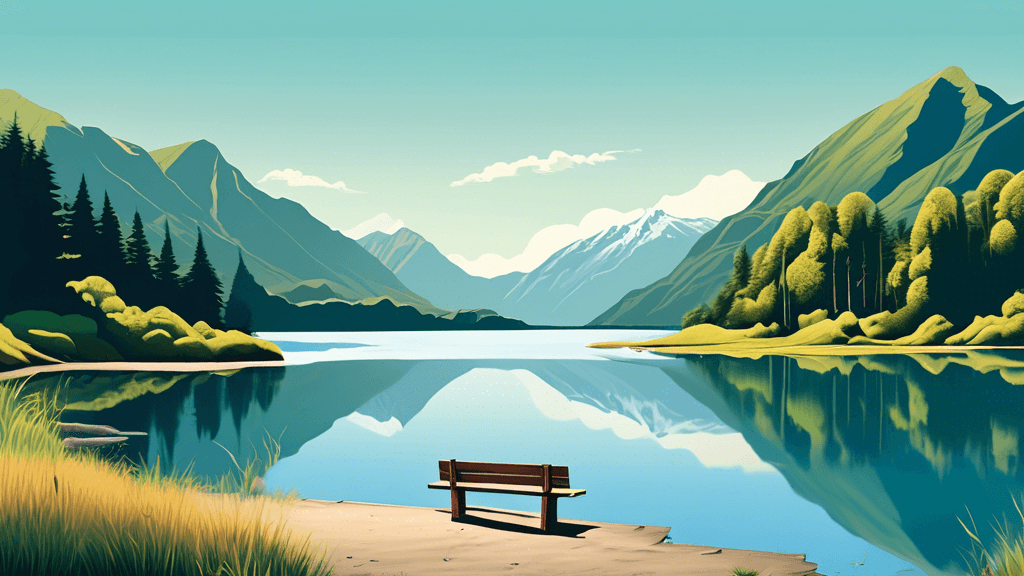
Embracing Serenity: Discovering Quiet Spots Across New Zealand
Share
Introduction to New Zealand's Quiet Spots
Have you ever wondered where you could go to truly escape, to find a pocket of silence away from the buzzing of modern life? New Zealand, known for its vast, untouched landscapes and vibrant biodiversity, offers countless quiet spots where one can reconnect with nature. But what makes these serene places special? And how can visiting these spots enhance our appreciation for nature and contribute to our personal well-being?
Why Seek Quietness?
In our hyper-connected world, finding time and space for silence has become a rare luxury. Silence offers not just a respite for the mind, but also has tangible health benefits. It reduces stress, heightens sensitivity to surroundings, and even encourages the development of new brain cells, leading to improved concentration and memory. So, why not turn to the tranquil arms of nature to find this silence?
Health Benefits of Silence:
- Reduces stress hormones
- Boosts the immune system
- Enhances concentration and memory by fostering new brain cell growth
- Promotes better sleep
Top Quiet Spots in New Zealand
New Zealand's diverse landscapes provide a myriad of options for those seeking solace. From secluded beaches to serene forests, following are some of the top spots where silence speaks volumes:
1. Cathedral Cove, Coromandel Peninsula
Accessible only by foot, boat, or kayak, this secluded spot offers stunning coastal views and the melodious sounds of the sea. The walk itself is a meditative experience, drawing you away from societal noise as you descend toward the cove.
2. Lake Matheson, West Coast
Famed for its reflective views of Aoraki/Mt. Cook and Mt. Tasman, Lake Matheson encapsulates tranquility. Early mornings here are especially quiet, with mist floating over the calm waters, creating a surreal experience.
3. The Catlins Coast, South Island
The Catlins area offers lush forests and rugged coastlines interspersed with quiet bays and waterfalls. Curio Bay, in particular, provides a serene environment where you can observe rare yellow-eyed penguins in a peaceful setting.
4. Wharariki Beach, Golden Bay
This remote beach is accessible through a short trail and is known for its wild, dramatic landscapes. The powerful waves and expansive sand make human voices seem inconsequential, allowing nature's voice to dominate.
Photographing Silence: Artistic and Conservation Insights
Photography in these quiet spots not only captures their untouched beauty but also plays a crucial role in environmental conservation. Pictures can speak loudly for the silent treasures of our planet, promoting awareness and urging preservation.
Notable photographer and conservation advocate Ansel Adams once said, We don't take a photograph, we make it. Indeed, every photograph we make of these serene places can be a step towards their conservation.
Planning Your Visit
To fully embrace the serenity of these spots, consider visiting during off-peak times. Early mornings or weekdays can provide the best experiences of solitude. Always remember to respect the natural environment—take pictures, leave only footprints.
Conclusion: The Call of Serenity
New Zealand's quiet spots offer a unique opportunity to not just witness, but truly engage with the natural world. In doing so, we do not just enrich our own lives but contribute towards the ongoing preservation of these pristine environments. As we allow ourselves to be enveloped by these silent sanctuaries, we are reminded of the importance of preserving such places for future generations.
So, are you ready to embrace the serenity? Pack your bags, grab your camera, and behold the silent marvels of New Zealand. With each visit, let us commit to being advocates for these quiet places, ensuring they remain untouched and respected as oases of tranquility in a noisy world.





